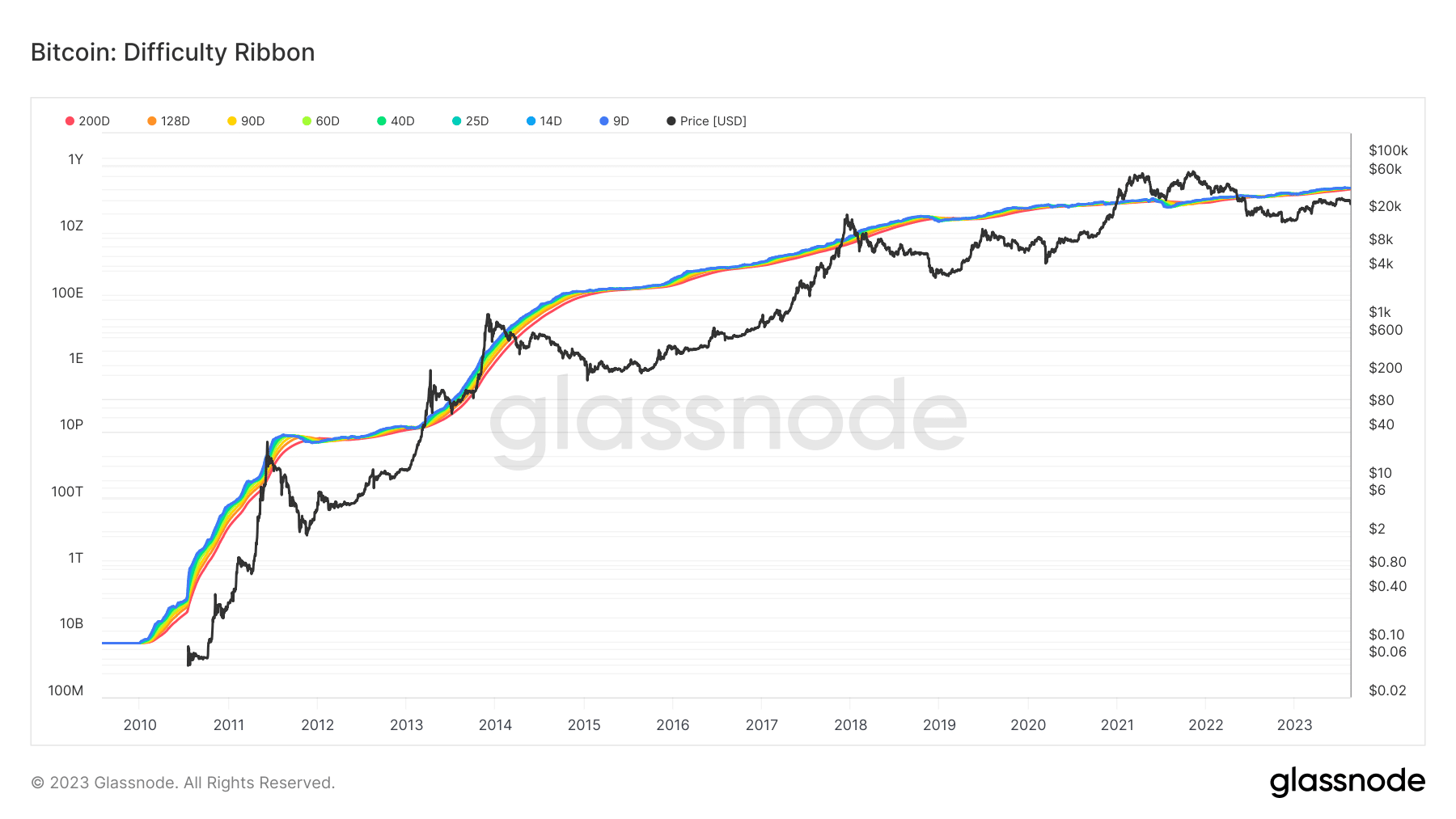- Bitcoin miners are transitioning from hardware dependencies to mining devices in order to increase their profitability.
- GPUs are better than CPUs at solving the encryption equations required to verify transactions on the blockchain. In response to this business model, the Bitcoin hash rate has reached a new All-Time High (ATH).
- Glassnode has shown that the difficulty ribbon is tightening. Therefore, using the 14-day and 200-day Moving Averages (MA), BTC is offering a good buying opportunity at its current price.
Is the Bitcoin mining hash rate increasing while miners continue to resist? Are miners selling BTC?
Investments in Bitcoin Mining are Increasing
Bitcoin miners are transitioning from hardware dependencies to mining devices in order to increase their profitability. This move signifies a significant development in the field of crypto mining, as miners aim to optimize their operations and increase profitability.
According to analyst Young Ju, miners are currently making significant investments in facilities regardless of market conditions. While mining hardware equipment assists in Bitcoin mining, there is a significant difference that allows mining devices to have an edge. While using Central Processing Units (CPUs), mining devices utilize Graphics Processing Units (GPUs).
Additionally, GPUs are better than CPUs at solving the encryption equations required to verify transactions on the blockchain. In response to this business model, the Bitcoin hash rate has reached a new All-Time High (ATH). The hash rate reflects the computational power allocated to securing the Bitcoin network. It is used to determine the health, security, and mining difficulty of a blockchain network.
Therefore, the increase in hash rate demonstrates miners’ determination to secure the Bitcoin network with maximum security. However, how has this affected miners’ outlook on the BTC market? A fair measure in this regard is known as the difficulty ribbon. The difficulty ribbon visually represents the network mining difficulty in relation to the price of Bitcoin.
As miners mine new coins as assets, they sell some of their coins to cover production costs. This creates bearish pressure on BTC value (difficulty ribbon expands).
And when weaker miners sell more coins to stay operational, they give up. At the same time, computational power and network difficulty decrease in this situation. This results in only the strong miners remaining, leaving more room for bullish price movements by selling less (difficulty ribbon tightens).
Hold on to Bitcoin
According to data at the time of writing, Glassnode has shown that the difficulty ribbon is tightening. Therefore, using the 14-day and 200-day Moving Averages (MA), BTC is offering a good buying opportunity at its current price.
At the time of writing, BTC was trading around $25,900, having lost 7% of its value in the past 24 hours. Additionally, Young Ju stated that the current price does not seem suitable for miners to sell.
To prove this point, CryptoQuant CEO and co-founder used the hardware efficiency ratio to Bitcoin hash rate. This ratio represents miner income per Terahash in relation to operational costs.
According to CryptoQuant data, the ratio did not increase impressively. Therefore, miners will likely continue to hold onto their current portfolios and rely on fees generated to finance daily costs.

